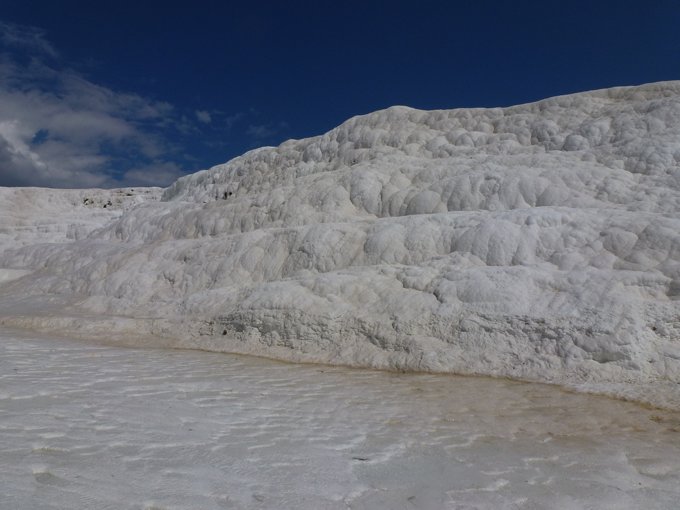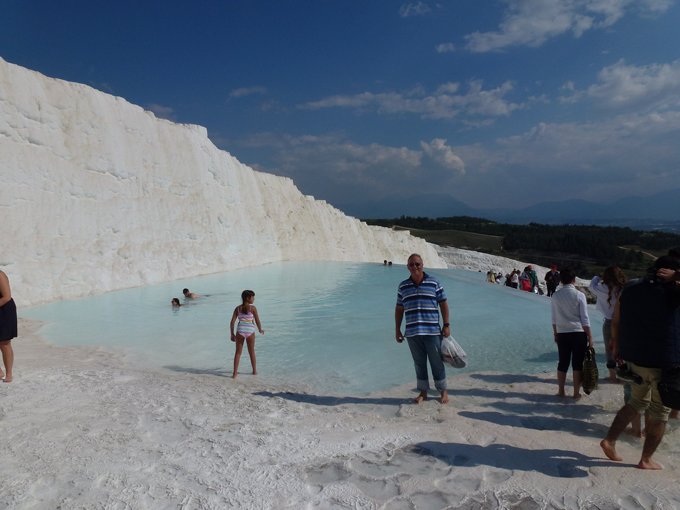Fwd: Pamukkale Western Anatolia. April, 2014

From: Valerie Shurvell <vjshurvell {CHANGE TO AT} gmail {DOT} com>
Date: Sat, Apr 26, 2014 at 4:18 PM
Subject: Pamukkale Western Anatolia. April, 2014
To: Sailing email <jimandvalerie {CHANGE TO AT} mailasail {DOT} com>
Pamukkale, Western Anatolia.
We hired a car for five days in order to travel to Pamukkale and Cappadocia. Pamukkale is something very new to us both. You can view Pamukkale from miles away as a very white mountain until you get closer and see the terraces and pools and the water flowing down the mountain. It is a natural phenomenon which resembles a frozen waterfall. The hot springs flow down and fill the pools which then flow over and cascade down the mountain. We had to remove our shoes and climb up to the top by walking through the water or paddling in the pools. Several people were swimming in the pools as the sun was warm and the water hot. The terraces over 100 metres in height compose of layers of accumulated limestone sediment which have gradually formed in the course of time. The hot springs at the top of the mountain emerge to the surface and the solution of calcium-carbonate in the spring water decomposes into carbon dioxide, calcium carbonate and water. The carbon dioxide is released into the air while the calcium carbonate separates off from the water to form greyish-white limestone sediment. The beds of the water-courses are filled up with these limestone deposits and the water confronted with these obstacles and forces the water to flow over the slopes into the pools and finally into the fields below. The calcium oxide in the water adds to the thickness of the white layers and widens the terraces producing pools in fantastic shapes such as oyster shells.
We noticed the experts on site could force the water to flow along different routes. The force of the water flowing even on a hot day was something to be very careful of as we climbed to the top and when we walked down again. At the top is the ancient pools where Cleopatra is suppose to have bathed when she stayed at the Hierapolis city. The remains of the city all date from the Roman period. Much of the city has fallen into ruins but the theatre is almost in one piece. The city covers many miles and overlooks from the top of the mountain all the surrounding areas. Many thousands of people must have lived in the city.
It was truly a wonderful experience and one we are pleased we found time to visit.








